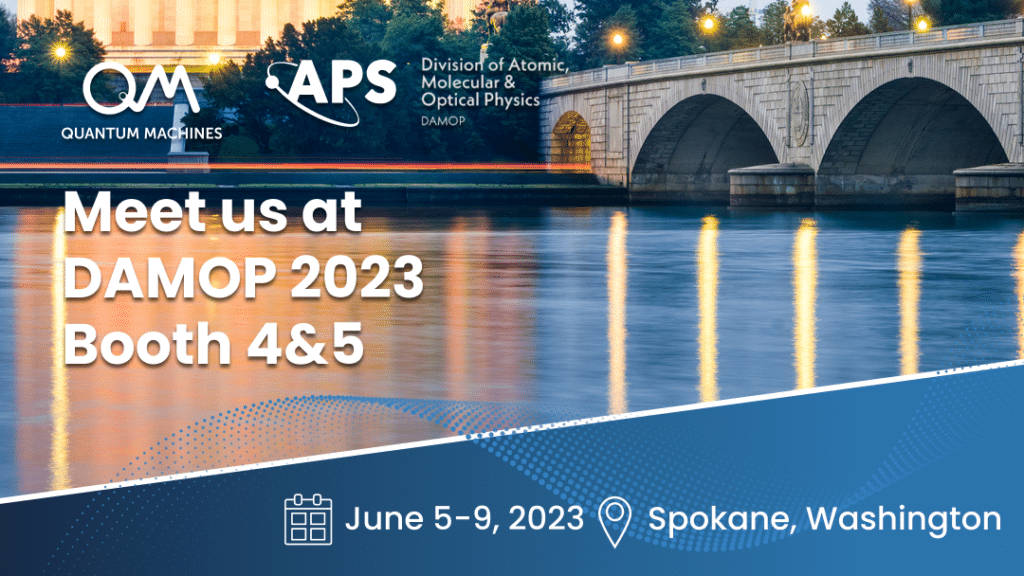Mid-Circuit Measurements Landed on Neutral Atoms Thanks to Advanced Quantum Control
The Why of Mid-Circuit Measurements
Mid-circuit measurements have been demonstrated on multiple qubit platforms, including trapped ions [1], superconducting [2], and spin [3] qubits. We know them well for their application in quantum error correction schemes and teleportation, but they really are beneficial almost everywhere. They unlock the potential of embedded calibrations, like frequency tracking, state trajectory estimation, and so much more. They are sometimes beneficial and some other times key ingredients of most fault tolerance proposals. This is why we are so excited to see mid-circuit measurements finally land on neutral atom platforms, as recently demonstrated [4] by the group of Prof. Mark Saffman at the University of Wisconsin-Madison.

“The flexibility of the OPX for generating complex signals has been instrumental in our ongoing work advancing the performance of neutral atom qubit systems.”
 Prof. Mark Saffman
Prof. Mark Saffman
University of Wisconsin-Madison USA

Meet the QM team at DAMOP this June to learn more about our advanced control solutions for AMO technologies.
Atomic Difficulties and How to Overcome Them
As explained by Graham et al. [4], the standard measurement protocol for neutral atom QPUs is incompatible with mid-circuit measurements, as it is global and destructive (this is why it has been harder to implement on this platform compared to others). The use of mid-circuit measurements usually requires selectivity in the sites addressed and the ability to reuse qubits after measurements. Try to focus the laser on an ancilla qubit to make the protocol selective, and you get scattered photons hitting your data qubit.
For the first time, the team at Wisconsin-Madison showed a mid-circuit measurement protocol on neutral atoms with global parallel ancilla readout. They used a clever shelving protocol to virtually hide the data qubits into hyperfine levels only weakly coupled to the measurement light, effectively protecting them from the scattered photons of the measured ancillae.
The procedure is intriguing: the data qubits are moved into a phase space about 9GHz away from the transition probed during measurement. To do so without incurring pumping into unwanted states, the team devised a polarization-sensitive microwave pumping using two horns shooting from different directions with controllable relative phases. Like in a complex game of chess, the controller’s signals move the data qubit states around while pumping ancilla qubits to stand still, and interleaves echo and dynamical decoupling sequences made of composite microwave pulses to mitigate dephasing and decoherence. The overall shelving protocol takes hundreds of pulses, carefully engineered, calibrated, and timed, enabled by an OPX+.

Figure 1: Experimental pulse sequence to characterize mid-circuit measurements as used by the Saffman group. Source: Graham et al. [4].
Orchestrating Atoms is All About Timing
Two ingredients make neutral atom arrays a very promising platform for quantum computing: the ability to compose very large qubit systems and the possibility of devising long-range controllable interactions via Rydberg blockade. As for coherence, the story is a bit more complicated. The idle coherence (for single-qubit operations or qubits just waiting about) is very long, hundreds of milliseconds, while the one in the Rydberg states (for two-qubit operations) is much shorter, typically less than 100 microseconds. So having to perform hundreds of operations for mid-circuit measurements is not actually a big deal coherence-wise because it does not involve Rydberg states. Nonetheless, the OPX+ has been previously used to perform similar operations with lasers instead of microwaves (as the OPX+ is insensitive to timescale), shortening the protocol orders of magnitude. We are still far from the limits of the OPX+ controller, and I am looking forward to seeing what crazy protocol researchers will demonstrate after the release of our joint product with NVIDIA, the DGX Quantum.
Mid-circuit measurements are a missing piece of the puzzle to enable measurement-based quantum computation with neutral atom arrays. Even though the road to fault tolerance is still long, this important milestone must be celebrated, as it tracks our progress towards a practical quantum advantage with neutral atoms. At Quantum Machines, we are especially happy because demonstrations such as this one show us we are indeed pushing the boundaries of quantum control and supporting researchers in exploring the potential of quantum computing faster than thought possible.
References
[1] P. Schindler, J. T. Barreiro, T. Monz, V. Nebendahl, D. Nigg, M. Chwalla, M. Hennrich, and R. Blatt, “Experimental repetitive quantum error correction,” Science 332, 1059 (2011).
[2] N. Ofek, A. Petrenko, R. Heeres, P. Reinhold, Z. Leghtas, B. Vlastakis, Y. Liu, L. Frunzio, S. M. Girvin, L. Jiang, M. Mirrahimi, M. H. Devoret, and R. J. Schoelkopf, “Extending the lifetime of a quantum bit with error correction in superconducting circuits,” Nature 536, 441 (2016).
[3] J. Cramer, N. Kalb, M. A. Rol, B. Hensen, M. S. Blok, M. Markham, D. J. Twitchen, R. Hanson, and T. H. Taminiau, “Repeated quantum error correction on a continuously encoded qubit by real-time feedback,” Nat. Commun. 7, 11526 (2016).
[4] Graham, T. M., Phuttitarn, L., Chinnarasu, R., Song, Y., Poole, C., Jooya, K., … & Saffman, M. (2023). Mid-circuit measurements on a neutral atom quantum processor. arXiv preprint arXiv:2303.10051.